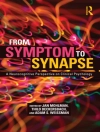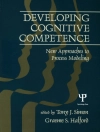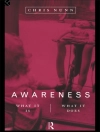Theory, assessment, and treatment strategies for offenders across forensic populations, with practical examples and discussion of often overlooked cultural considerations
The Wiley Handbook of What Works in the Rehabilitation of People Who Have Offended comprehensively outlines effective rehabilitation strategies for offenders while acknowledging the challenges in implementation and discussing ethical considerations, potential biases, and the need for ongoing evaluation. The book introduces the current state of effective practices, outlines up-to-date risk assessment processes for various crime types, investigates effective treatments for diverse forensic populations, explores treatments for those in prison and mental health settings, and examines the often-overlooked cultural factors influencing rehabilitation efforts.
This Second Edition, expanded from 25 to 32 chapters, has been written by leading researchers, seasoned professionals, and academics, providing a wealth of expertise and diverse perspectives. Each chapter offers a well-researched and balanced review of existing literature, laying a solid foundation for comprehending the effectiveness of various rehabilitation approaches. Practical examples enhance the content’s applicability, emphasizing evidence-based practices crucial for accountability and effectiveness in the criminal justice system.
Some of the sample topics discussed in The Wiley Handbook of What Works in the Rehabilitation of People Who Have Offended include:
- Risk, Need, and Responsivity principles used in the assessment and triage of offenders and evidence for the Good Lives Model in supporting rehabilitation and desistance from offending
- Recidivism risk in people convicted of intimate partner violence and treatment of aggressive and problematic adjudicated youth in a secure psychiatric setting
- Treatment of persons convicted of sexual offenses in the community, including online offending
- Strategies to prevent and reduce gang involvement and rehabilitation of intellectually disabled individuals who have harmful sexual behavior
Offering a valuable evidence-based coverage in the pursuit of effective rehabilitation strategies, the Second Edition of The Wiley Handbook of What Works in the Rehabilitation of People Who Have Offended is an indispensable resource for anyone involved in the criminal justice system, including professionals, policymakers, researchers, and students.
Tabela de Conteúdo
About the Editors xi
List of Contributors xiii
Foreword xvii
Acknowledgements xix
Part I Introduction 1
1 What Works in Correctional Rehabilitation: 10 Years On 3
Leam A. Craig, Louise Dixon, and Theresa A. Gannon
2 Public Support for a New Correctional Era: Attitudes Towards Punishment, Rehabilitation and Reform in America 13
Cheryl Lero Jonson, Leah C. Butler, and Francis T. Cullen
Part II What Works in the Assessment of Those Who Have Offended 27
3 Using Case Formulation Techniques for the Explanation and Prediction of Crime 29
Martin Rettenberger and Leam A. Craig
4 How the Risk, Need and Responsivity Principles Are Being Used in the Assessment and Triage of Individuals Who Have Offended 43
Faye S. Taxman
5 What Works in Assessing Recidivism Risk in People Convicted of Intimate Partner Violence 53
Mark E. Olver, Sydney S. A. Rine, and Madison C. Fairholm
6 What Works in the Assessment of Risk and Treatment Need in Young People Who Offend 65
Louise Bowers and Annette Mc Keown
7 What Works in Violence Risk Assessment in Forensic Settings 81
Ivan Sebalo
8 What Works in Assessing Recidivism Risk in Men Convicted of Contact Sexual Offenses 93
David Thornton
9 What Works in the Assessment of Recidivism Risk for People Convicted of Child Sexual Exploitation Material Offences? 105
Anton Schweighofer, Lyne Piché, and Abigail Kolb
10 What Works in the Assessment of Stalking Threat and Risk of Harm 117
Sarah H. Coupland and Jennifer E. Storey
Part III What Works in the Rehabilitation of Those Who Have Offended 131
11 Rehabilitation and Processes of Change 133
James Mc Guire
12 Working with Neurodiversity in Forensic Rehabilitation Interventions 147
Sunpreet Kandola and Jamie Walton
13 What Works in the Treatment of Persons Convicted of Sexual Offences in the Community (Including Online Offending) 161
Derek Perkins
14 What Works to Prevent and Reduce Gang Involvement? 173
Jaimee S. Mallion and Jane L. Wood
15 What Works in the Rehabilitation of People Who Set Deliberate Fires? 187
Katie Sambrooks, Nichola Tyler, and Theresa A. Gannon
16 What Works in Reducing Re-offending Among Persons Who Misuse Substances or Are Substance Dependent 201
Dominique de Andrade
17 What Works for Women in Custodial Settings 231
Shelley L. Brown, Ellen M. N. Coady, and Eva G. Huppe
18 What Works with Women Who Have Convictions for Sexual Offences: The Importance of a Gender-Responsive Approach 247
Franca Cortoni
19 What Works in Reducing Intimate Partner Violence Recidivism 259
Nicola Graham-Kevan, Louise Dixon, and Eve Russell
20 Youth Offending Interventions 273
Ian Lambie and Julia Ioane
21 What Works with People with Intellectual Disabilities Who Have Harmful Sexual Behaviour 287
Glynis H. Murphy
22 Evidence for the Good Lives Model in Supporting Rehabilitation and Desistance from Offending 299
Gwenda M. Willis and Tony Ward
Part IV What Works in Secure Settings 311
23 What Works in the Treatment of Men Whose Behaviour Poses High Risk in the Context of Mental Disorder? 313
Estelle Moore
24 Psychologically Informed Planned Environments 327
Mark Freestone and Landon Kuester
25 Maximising Treatment Outcomes with Persons Convicted of Sexual Offences Who Are in Secure Settings 337
Deirdre M. D’Orazio
26 Treatment of Aggressive and Problematic Adjudicated Youth in a Secure Psychiatric Setting 349
Michael F. Caldwell and Gregory J. Van Rybroek
27 Working with Clinically Relevant In-Treatment Presentations in a Trauma and Diversity Responsive Way 363
Lawrence Jones
Part V Cultural Factors and Individualised Approaches in the Rehabilitation of Those Who Have Offended 387
28 Case Management in the Community: Working with People with Personality Problems Who Have Offended 389
Caroline Logan, Paul Brown, Andrew Connelly, Richard Moses, Karen Orpwood, and Kirstie Thompson
29 Cultural Considerations in the Assessment of Risk Factors for Sexual Recidivism 409
Emily K. Riemer, Mark E. Olver, and Keira C. Stockdale
30 Cultural Considerations for Treatment of Persons Convicted of Sexual Offences 423
Geris Serran
31 Cultural Factors in the Development and Delivery of Offender Rehabilitation Programmes in Aotearoa New Zealand 433
Armon J. Tamatea
Index 445
Sobre o autor
LEAM A. CRAIG, Ph D, CPsychol, FBPs S, FAc SS, is a Consultant Forensic and Clinical Psychologist, and Partner at Forensic Psychology Practice Ltd. He is a Professor Visiting Chair of Forensic Psychology at the University of Lincoln, UK, a Visiting Professor of Forensic Clinical Psychology at Birmingham City University, UK, and an Honorary Professor of Forensic Psychology at the Centre for Applied Psychology at the University of Birmingham, UK.
LOUISE DIXON, Ph D, CPsychol, is a Professor and Pro Vice-Chancellor of Education at Glasgow Caledonian University, Scotland.
THERESA A. GANNON, DPhil, CPsychol, is a Professor of Forensic Psychology and Director of the Centre for Research and Education in Forensic Psychology (CORE-FP), University of Kent, UK.












